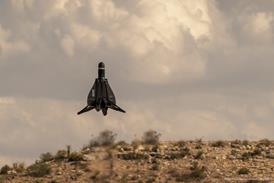Australia is looking to implement new reduced separation standards when aircraft are using global navigation satellite system (GNSS) positions ahead of an International Civil Aviation Organisation implementation of revised standards.
Two aircraft on the same cruising level reporting position via GNSS are currently required to be a minimum of 29nm (54km) apart in lateral separation, which is "quite conservative when compared to the demonstrated accuracy and reliability of GNSS", according to Australia's Civil Aviation Safety Authority (CASA). A tolerance of 14nm is currently applied to reported GNSS positions, with separation based on the circular error of position (CEP) plus a buffer factor of 1nm, resulting in the lateral separation of 29nm. Research in Australia and overseas has shown that reducing the CEP by half will still maintain appropriate levels of safety, says CASA.
Due to the need to consult with 190 contracting states, the International Civil Aviation Organisation is not expected to amend procedures for air navigation services-air traffic management (PANS-ATM) for another two years.
The current lateral spacing requirement "severely limits the options for efficient and fail-tolerant route structures between airports, particularly in the more remote areas of Australia that are not well provided with traditional navigational aids and which are outside of radar surveillance coverage", says CASA, which has established a project to look at comprehensive risk assessments conducted by Airservices Australia and industry consultation on the issue.
Western Australia would particularly benefit from reduced separation standards, CASA believes. Airservices Australia has identified the need for comprehensive changes to the air route structure in WA in order to enable the system to better cope with current and projected traffic levels, but such changes need to be implemented before the ICAO process will be completed, says the regulator.
Source: Flight International























